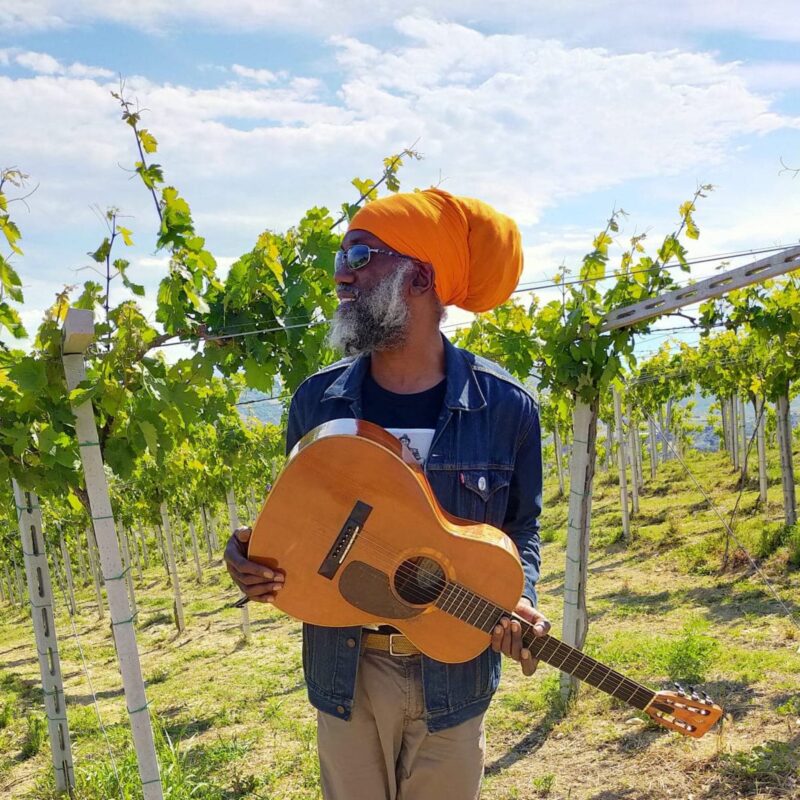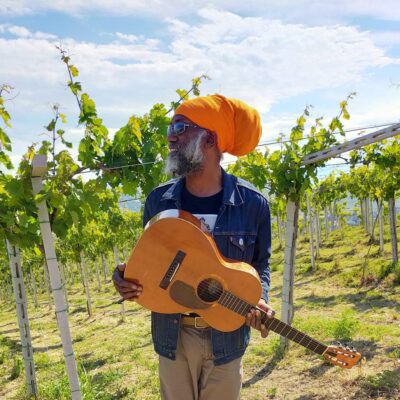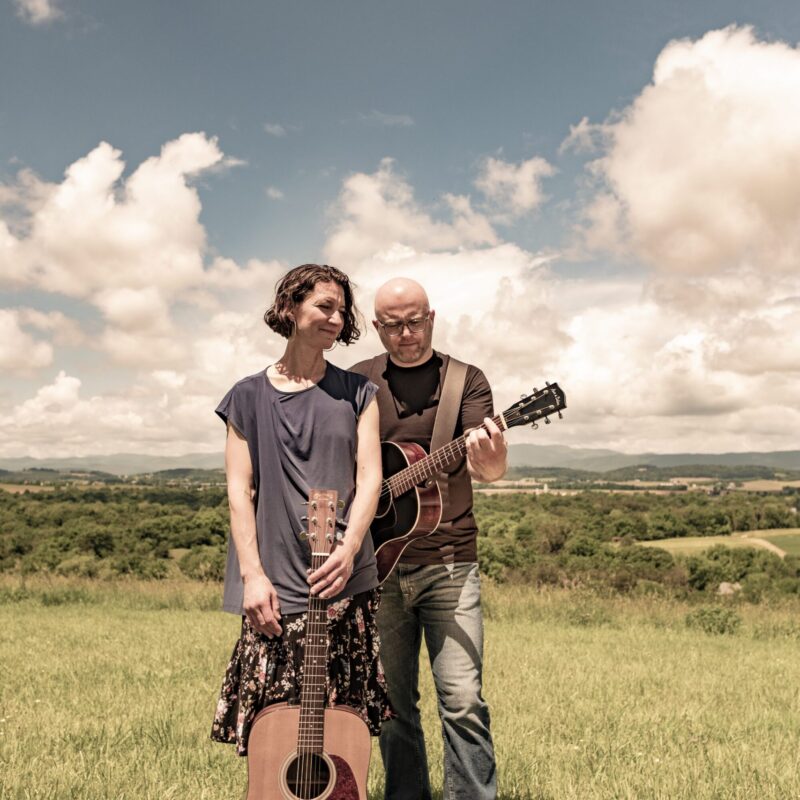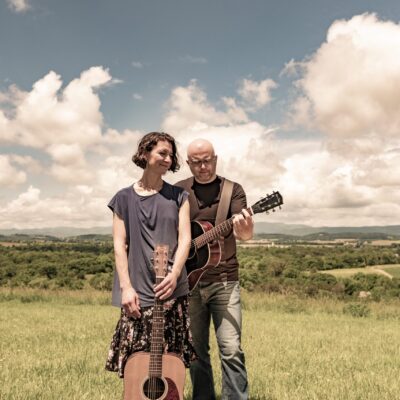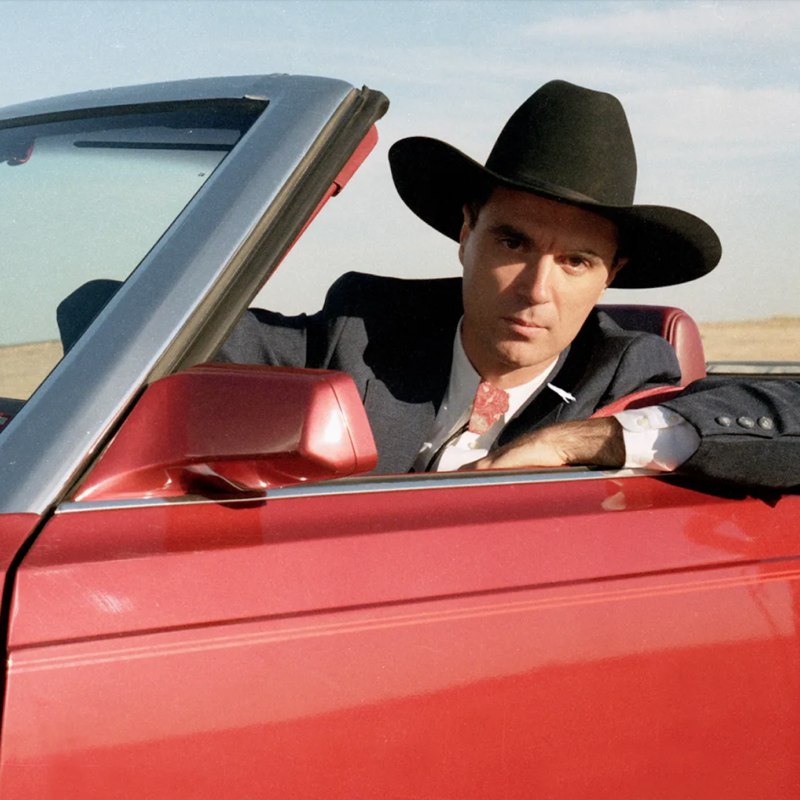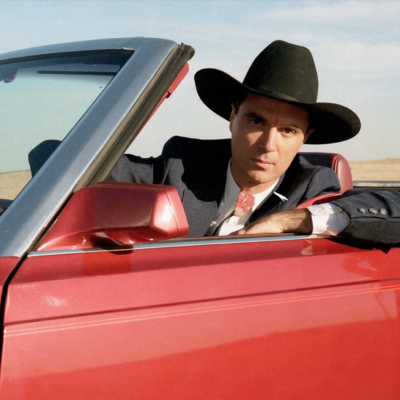McGuffey Art Center’s main office is spilling short bits of sound—cats yawning in the sun, palms sifting through sand, teapots spouting steam, the gasps and sighs people make in their sleep and never acknowledge. But no words from the six members of the Zen Monkey Project, scattered around the room, not to one another and certainly not to the couple of elderly museum visitors that step unsuspecting into the room for a glimpse at Cri Kars-Marshall’s ceramic exhibit.
 Life imitates art: Zen Monkey Project members Brad Stoller and Katharine Birdsall twist and shout during “Art for Lunch” at the McGuffey Art Center. |
Five of the dancers hold their ground and their gazes, studying Kars-Marshall’s glassy, smoke-kissed objects and letting their bodies coil and uncoil in response. Zap McConnell, however, strides towards the couple and hands them a slip of paper: “We are engaging in a weekly improvisational practice that is open to the public. Please feel free to stay and watch for as long or as short as you like.”
The Monkeys’ 10-minute warm-up ends a bit after noon, the weekly start time for “Art for Lunch,” and the dancers—McConnell, Zen Monkey founder Katharine Birdsall, Kelly East, Cindy Leal, Brad Stoller and Heather Hutton—meet near the center of the room. East takes a moment to explain to the old couple that the group is “emphasizing continuity and breaks today,” and the couple nods, then quietly exits.
“Does anyone have a Band-Aid?” asks Cindy Leal, one of the younger dancers in the group, her tightly curled hair hanging down around her face. Since she performed “Still Life,” a mixed-media dance presentation, last September, Leal has been running holes into her feet. Her new dance company, This Little Bird Theatre, plans to open its first full-company show on April 14 at the Bridge/Progressive Arts Initiative; her company is made up of a good number of the performers from “Still Life,” including local artists Kris and Kelly Bowmaster. And the curtain goes up on PVCC Theatre’s production of Jean-Paul Sartre’s No Exit (the “Hell is other people” one), which Leal directed, on Wednesday, February 13.
East reviews the ideas of “continuous and broken,” or “continuous and interrupting,” with the girls as Brad Stoller rolls his shoulder into her back and gently flips across her, laughing. McConnell proposes that the group move upstairs in the gallery to interact with a new space; she’ll leave town soon to begin a residency with another Zen Monkey founder, Ray Eliot Schwartz, at La Universidad De Las Americas in Mexico, and seems bent on getting a good dose of practice in.
The pack moves upstairs, where they decide on a new game: The group will split into groups of three and, while one group interacts with the art in the room to ethereal, Brian Eno-ish music, the other group watches. At the far end of the hall, the old couple enters again; the Monkeys are used to regulars dropping in each week, but can’t tell whether this pair followed them upstairs to watch.
“Freeze.”
The three dancers pause, and the three seated Monkeys move to the floor to mimic their poses; the dancers sit and watch.
East sits silently and watches as Leal, who replaced her, moves with a jarring speed and muscularity, the opposite of East’s deliberate, mantis-like movements. The two planned to open a “Barefoot Boogie,” what McConnell calls a “smoke-free, liquor-free, shoe-free environment to get your groove on,” on January 17, but snowfall that afternoon cancelled the event. (The next is scheduled for Thursday, February 21).
“Freeze.”
The group swaps spots again, and East stands across from Stoller. The two catch eyes and, turning towards the far end of the hall, take off at a long-limbed run, heading for the door.
Freeze.
’Bout their generation
The “press breakfast” spread at the Kluge-Ruhe Aboriginal Art Collection is the stuff that the breakfast-skipping, coffee-guzzling, non-morning-person dreams of —a dozen bagels, a glass pitcher of orange juice, shortbread cookies and, yes, more coffee. The only thing missing, it seems, is the press.
In mid-January, Curtain Calls drove out past Pantops to visit the gallery and meet Sally Butler, the curator of “Our Way,” an exhibit of paintings with ties to the community-oriented, “places and people” traditional art movement in Australia. (“Our Way” opens a second exhibit at UVA’s Newcomb Hall Art Gallery on February 13 with a guest lecture from contemporary art professor Terry Smith from the University of Pittsburgh). The five painters on display, however, are from the Lockhart River community, an isolated community of 800 people or so on the northern tip of the continent. Contemporary art never had a revival in Lockhart due to its remoteness, and elders in the community saw the younger generation as indifferent to traditional art. So they let the tradition die out.
Fortunately, the Queensland government began funding all types of artists, traditional and modern, to visit the isolated community and teach art classes. The result is the Lockhart River Art Gang, a group of artists that infuses their maps and documents of community life with abstract expressionism.
Butler and CC are the only ones at Kluge-Ruhe, so she walks Curt through the exhibit for 40 minutes and points out overwhelmingly colorful pieces—Samantha Hobson’s “Bust ’Im Up Again,” a bruise-colored mess tied up with a long, yellow splatter, a document of domestic violence; Rosella Namok’s “Old Girls…They Talk in the Sand,” five long panels with finger-raked streaks of paint, paths that Namok saw the previous generation of Lockhart women scratch in sand as they told stories.
“It’s a continuity of the contemporary art movement, but in a different way,” says Butler. “Now, elders in Queensland take their lead from the younger generation.”
When history isn’t documented, cultural artifacts hiccup across generations—dance runs wild, art spatters wildly. CC moves on to a painting titled “Sorry Moment” by Silas Hobson, a rock guitarist and traditional dance revivalist that renders everything from Western graffiti to Aboriginal myth in bright, often cartoonish style, and hopes that someone else, young or old, shows up for the show.
Got any arts news or opinions on There Will Be Blood? E-mail curtain@c-ville.com.
